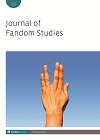
Full text loading...

As fan studies increasingly explores understudied fan communities this article calls for the inclusion of children as a crucial overlooked group of fans. Drawing upon research that considers fandom throughout the life course, it argues that fandom is an important part of childhood and one that may look different than it does for adult fans. I argue, the extent to which children’s media consumption practices resemble fan practices has obscured the fact that children can be fans. In this article I consider the impediments to considering the fandom of children, the ways in which children may be acting as – if not labelling themselves as – fans, what doing so can offer both fandom studies and children’s media studies and I lay out some suggestions for beginning the process of examining the practices and sites of children’s fandom.

Article metrics loading...

Full text loading...
References


Publication Date:
https://doi.org/10.1386/jfs.7.2.93_1 Published content will be available immediately after check-out or when it is released in case of a pre-order. Please make sure to be logged in to see all available purchase options.